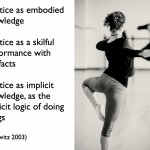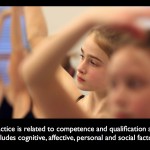Layering Personal Learning Environments
Continuing the mini series around PLEs.
In 2008 I wrote:
Early proponents of Personal Learning Environments have tended to divide between those who see Personal learning Environments as a concept and those who have focused on PLEs as an application or set of applications. To a considerable extent this is a false dichotomy.
If it is accepted that the PLE involves the use of Information and Communication technologies then it necessarily involves applications. On the other hand any learning technology, however designed and despite overt statements to the contrary, inevitably facilitates or hiders different approaches to learning and knowledge construction. In other words all educational technology contains or supports an implicit pedagogic approach.
The issue is not a concept or an application but rather the processes of researching and designing technological and pedagogical approaches. The move to a leaner centred approach to pedagogy and a community based approach to knowledge construction and curriculum requires new approaches to research and design.
I think that still holds up four years on. But there is a problem. Most of the research and design activities into PLEs have taken place within the context of academic education and particularly in Universities. Universities have in general a long established and fairly entrenched pedagogic model. Faced with such a model, PLE designers and researchers have tended to see the introduction of a PLE either as a place to record the outcomes of learning – essentially as an e-Portolio, albeit socially enhanced – or as an additional online space linking the institution with the outside world. There is nothing wrong with either approach (and I appreciate that we now realise that many students may struggle with technology). However such approaches have limited us to the potential of PLEs.
Perhaps the most interesting research and design approach has been the advent of MOOCs – Massive Open Online Courses. As with any innovation the word MOOC is now morphing to describe a variety of developments in online learning. But what has been interesting is that essentially participants are expected to set up their own PLE, and to be responsible both for their own learning and for the learning of their peers.
I have been lurking around the Change 2011 MOOC – the self styled mother of all MOOCs – which comes to an end this week. Change 2011 provides an automated Daily Newsletter aggregating blogs and tweets around the course.
And reading the newsletters and digging into so0me of the course blogs their appears to be a fall of in participation and activity during the course . That is perhaps not surprising. Change 2011 was a long course. And one of the attractions of open and free courses like this is that people can dip in and out as they wish.
Yet I still see motivation as an issue. And this issue is also raised in a number of research papers talking about PLEs in higher education. Of course that may merely refect student expectations. In the UK with rising fees, students expect to be taught – and somewhat depressingly some evidence suggests that what they want to be taught is just that knowledge they need to pass an exam.
In my 2008 paper I talked about the move to a leaner centred approach to pedagogy and a community based approach to knowledge construction and curriculum. It could be argued that the Change MOOC reflects a community of practice and that community is structuring its own learning and knowledge. But I would be interested in seeing the potential of using PLEs in wider communities outside the higher education sector. And here the question of motivation and support becomes more critical. Learners will need considerable help in scaffolding their learning. Of course such scaffolding can be supported technologically. But teachers and trainers also have a key role in scaffolding learning and building on previous attainment and knowledge to accomplish new learning and competence through involvement in engaging and doable tasks that are not a simple answer to a question but involve problem solving, judgement, analysis, or synthesis (Starr, 2000).
Put simply, I do not think that PLEs as we have presently developed them provide enough support for scaffolding. I am not sure of the answer to this issue. But I think we need research and development designs that build on learning in communities of practice and particularly that look at scaffolding knowledge in different domains and in particular in domains that involve a relationship between knowledge and practice. In this respect we may need to look more closely at learning episodes and at the use of physical objects for learning. This approach has been adopted by the Learning layers project, currently being negotiated with the European Commission. “Learning Layers aims to develop a set of modular and flexible technological layers for supporting workplace practices in SMEs that unlock peer production and scaffold learning in networks of SMEs, thereby bridging the gap between scaling and adaptation to personal needs. By building on recent advances in contextualised learning, these layers provide a meaningful learning context when people interact with people, digital and physical artefacts for their informal learning, thus making learning faster and more effective. Building on mobile learning research, the project aims to situate learning into physical work places and practices to support situated, faster and more meaningful learning. Learning Layers provide a shared conceptual foundation, independent of the tools people use and the context they are in.”
Thus rather than seeing a PLE as a containers or connections- or even as a pedagogical approach – PLEs might be seen instead as a flexible process to scaffold individual and community learning and knowledge development. And of course, with powerful mobile devices that learning can take place in contexts where knowledge is applied, rather than as pure knowledge abstracted from its application.
More to come…..


